Synanthropic Suburbia
Design Experiments that re-structure human animal interactions and enrich suburban ecosystems through the attachment of architectural prosthetics to the single-family home.

Animals are invading the city. Coyotes are sighted on downtown streets with greater frequency, raccoons notoriously forage through greenbins as their primary source of food, and all forms of animals inhabit the surfaces, edges and cavities of the built environment. Once wild animals are now adapting to the urban ecosystem and a new human animal relationship is emerging.
Between the domestic and the wild are the synanthropic species, defined as animals who benefit from living in close proximity to humans yet, remain beyond their control. They are the urban mediate, capable of living alongside the pervasive human population by adapting to anthropogenic behaviours and environments. As the conceptual division between city and nature dissolves, architecture is called upon to negotiate the physical boundary between human and synanthropic animal.
![]()
Between the domestic and the wild are the synanthropic species, defined as animals who benefit from living in close proximity to humans yet, remain beyond their control. They are the urban mediate, capable of living alongside the pervasive human population by adapting to anthropogenic behaviours and environments. As the conceptual division between city and nature dissolves, architecture is called upon to negotiate the physical boundary between human and synanthropic animal.

The thesis is positioned within a landscape of rapid ecological transformation – the suburbs – and engages the space of greatest tension between human and animal – the domestic territory of the house. The objective is to explore how architecture can incorporate habitat support into architectural form and landscape systems. Synanthropic Suburbia proposes a series of telescoping design experiments that position six animal species as active players by engaging their habitat requirements, biological behaviours, and seasonal patterns. Three architectural prosthetics re-imagine conventional building components into hybrid systems that augment the single family home and define the physical interface between human and non-human species.
The multiplication of the prosthetic systems engages the broader biological requirements of a species and integrates the spatial development patterns to define new synanthropic suburban typologies. These syn-urban building blocks are then proliferated across the territorial scale to create a robust, novel ecosystem that is capable of supporting a diversity and density of human and non-human species. The design process seeks to unpack the interconnectivity between complex socio-ecological systems through the multi-scale design of the suburban biome.
In the current context of global urbanization and socio-ecological change, Synanthropic Suburbia takes the opportunity to restructure human biological and cultural relationships with non-human species. It imagines a synanthropic architecture which subtly blurs the spatial definition between human and non-human to maximize the mutual benefits of cohabitation, shifting human perceptions and enabling more hybrid conditions to emerge.
The multiplication of the prosthetic systems engages the broader biological requirements of a species and integrates the spatial development patterns to define new synanthropic suburban typologies. These syn-urban building blocks are then proliferated across the territorial scale to create a robust, novel ecosystem that is capable of supporting a diversity and density of human and non-human species. The design process seeks to unpack the interconnectivity between complex socio-ecological systems through the multi-scale design of the suburban biome.
In the current context of global urbanization and socio-ecological change, Synanthropic Suburbia takes the opportunity to restructure human biological and cultural relationships with non-human species. It imagines a synanthropic architecture which subtly blurs the spatial definition between human and non-human to maximize the mutual benefits of cohabitation, shifting human perceptions and enabling more hybrid conditions to emerge.

Compost Chimney
In North American cities, the raccoon is an inevitable neighbour. This medium sized, nocturnal creature is notorious for accessing neighbourhood garbage and green bins. The night disturbances and unsightly mess that raccoons leave behind is a nuisance for any homeowner.
Instead of lamenting their abilities, the Compost Chimney prosthetic seeks to productively employ both raccoon and homeowner in the conversion of organic waste to nutrient rich soil. Homeowners place food waste in the lower composting chamber which is then aerated when the raccoon turns an external gear in exchange for some food. The composted soil serves to enrich the local suburban landscape and enable new growth. The upper volume of the Compost Chimney ventilates the compost and provides much needed habitat for chimney swifts, a unique bird whose sporadic flight patterns and habit of nesting within masonry chimneys differentiate it from other species.
Instead of lamenting their abilities, the Compost Chimney prosthetic seeks to productively employ both raccoon and homeowner in the conversion of organic waste to nutrient rich soil. Homeowners place food waste in the lower composting chamber which is then aerated when the raccoon turns an external gear in exchange for some food. The composted soil serves to enrich the local suburban landscape and enable new growth. The upper volume of the Compost Chimney ventilates the compost and provides much needed habitat for chimney swifts, a unique bird whose sporadic flight patterns and habit of nesting within masonry chimneys differentiate it from other species.

Chimney Swift Parameters
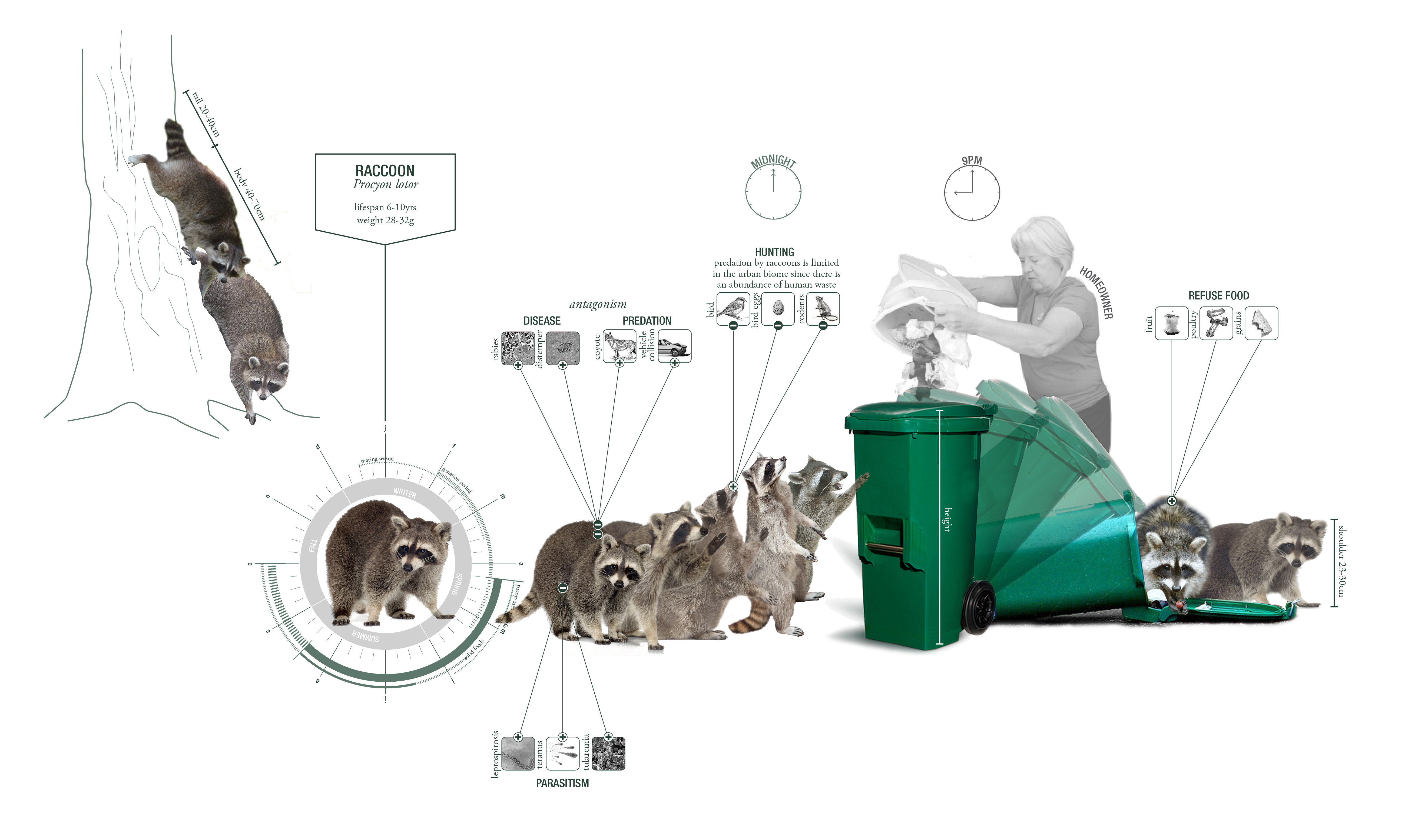 Common Raccoon Parameters
Common Raccoon Parameters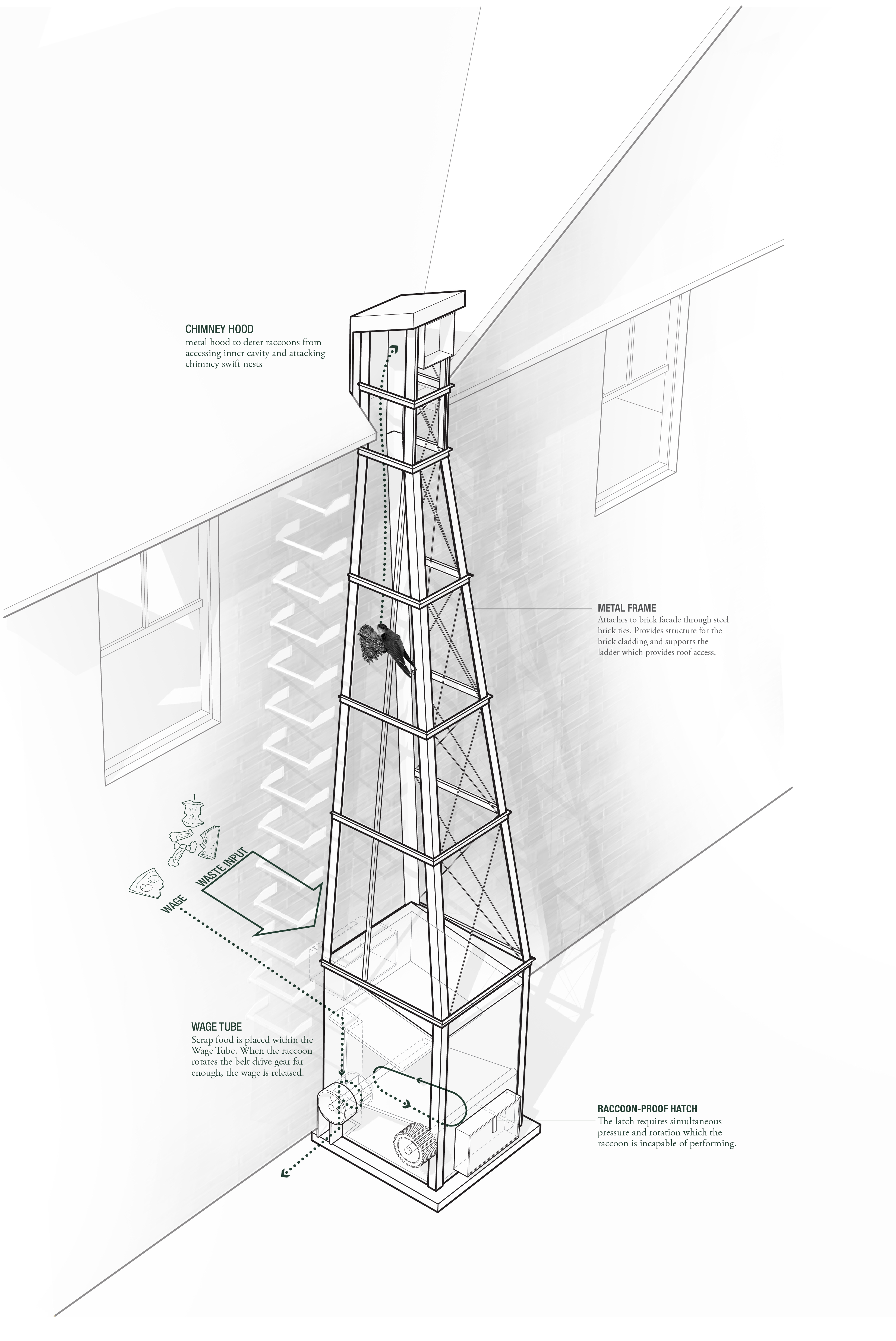 Compost Chimney Axonometric
Compost Chimney Axonometric
Habitat Dormer
The Habitat Dormer prosthetic strives to provide nesting sites for two nocturnal, pest-consuming species, the Barn owl and the Brown bat, who are both suffering from habitat loss due to changes in architectural and agricultural practices. Barn owls traditionally shared a mutually beneficial relationship with farmers, finding shelter in barns in exchange for consuming and controlling abundant rodent populations. Brown bat are voracious consumers of insects and typically find shelter in drafty barns and attics or beneath cladding materials, however, as building enclosures become increasingly tightly sealed, nesting sites are become limited.
Within a suburban context each distinct species is capable of providing pest control services for homeowners. A thickened cladding system provides carefully tuned nesting sites for each species at the periphery of the house while expanding the human domestic habitat through the re-imagination of a dormer.
Within a suburban context each distinct species is capable of providing pest control services for homeowners. A thickened cladding system provides carefully tuned nesting sites for each species at the periphery of the house while expanding the human domestic habitat through the re-imagination of a dormer.

Brown Bat Parameters

Barn Owl Parameters
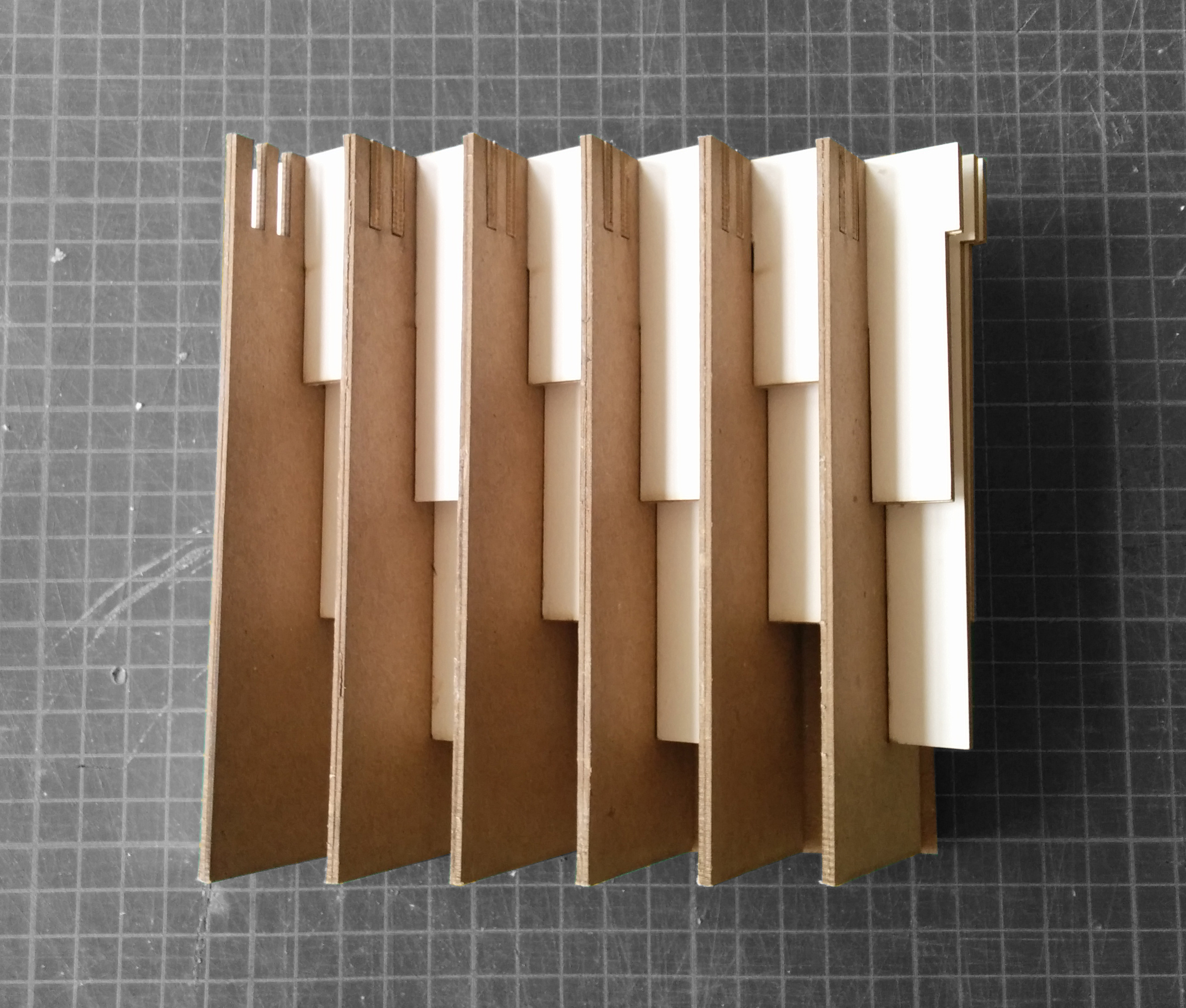

 Bat Wall Cladding Prototype
Bat Wall Cladding Prototype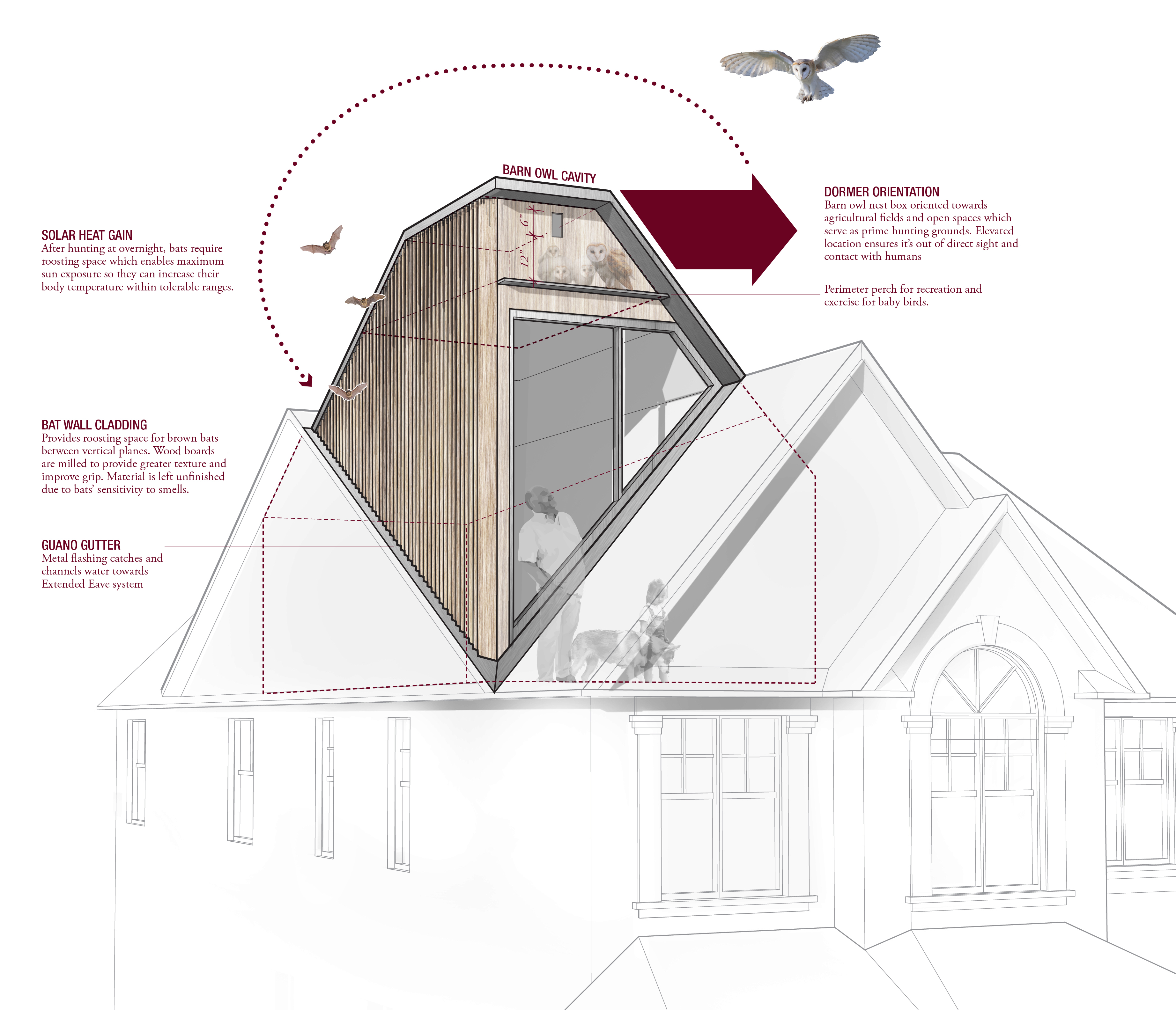
Habitat Dormer
Extended Eave
The Extended Eave merges water mitigation systems with exhaust vents to create extended season habitat for Bluebirds and Tree swallows. Both are at-risk due to competition with overly abundant House sparrows and European starlings who dominate viable nesting cavities. The Extended Eave engages interspecies dynamics to provide specifically structured and positioned nesting boxes within the drainage and exhaust system
For homeowners, the system also improves the functionality and appearance of typical eaves troughs by using vegetation and extended planting beds to increase rainwater capacity and reduce risk of debris build up. The Extended Eave enhances the aesthetic and ecological value of the house while encouraging desirable avian species who serve as natural pest control.
For homeowners, the system also improves the functionality and appearance of typical eaves troughs by using vegetation and extended planting beds to increase rainwater capacity and reduce risk of debris build up. The Extended Eave enhances the aesthetic and ecological value of the house while encouraging desirable avian species who serve as natural pest control.

Treeswallow Parameters
 Bluebird Parameters
Bluebird Parameters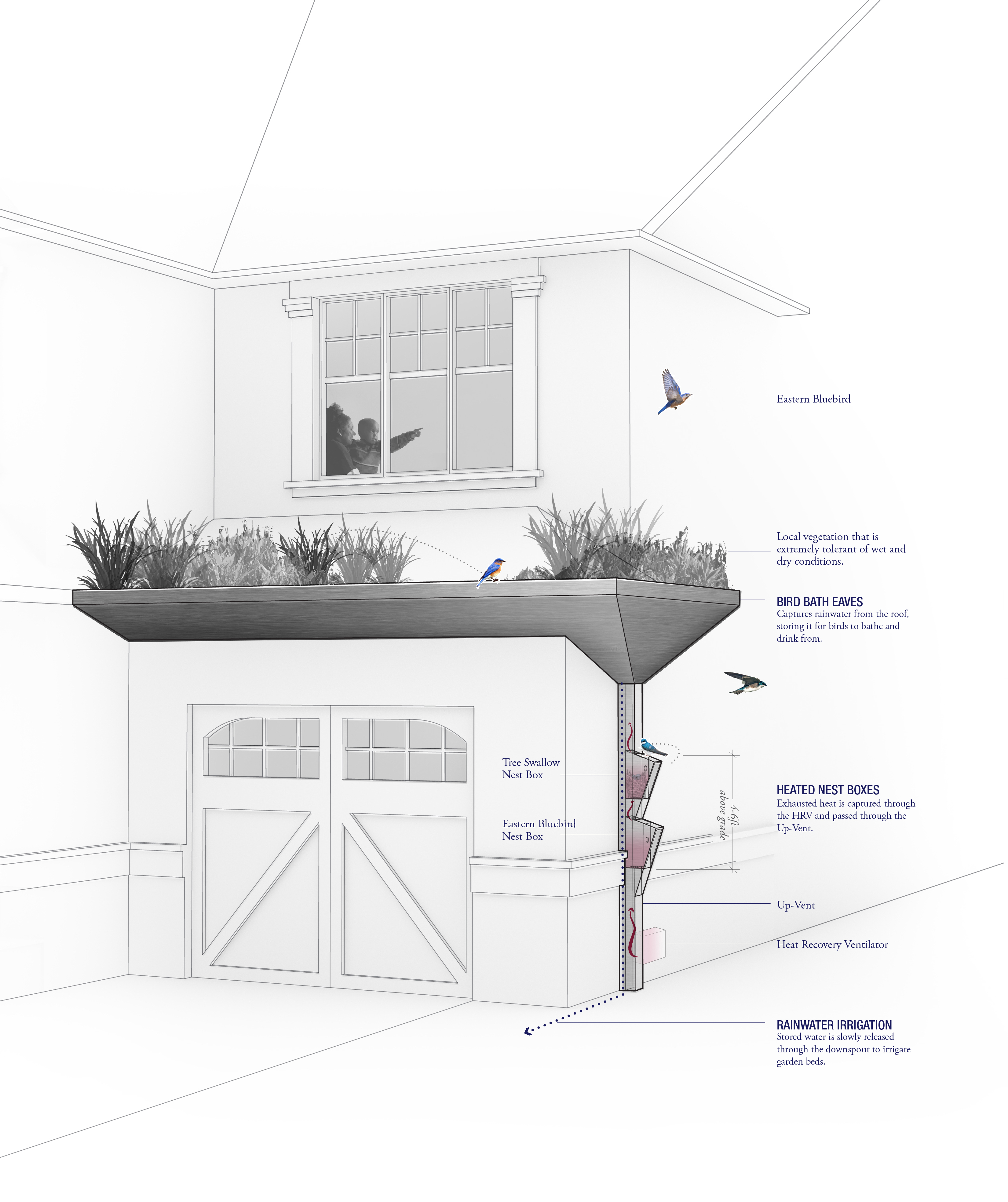 Extended Eave for Bluebirds & Treeswallows
Extended Eave for Bluebirds & Treeswallows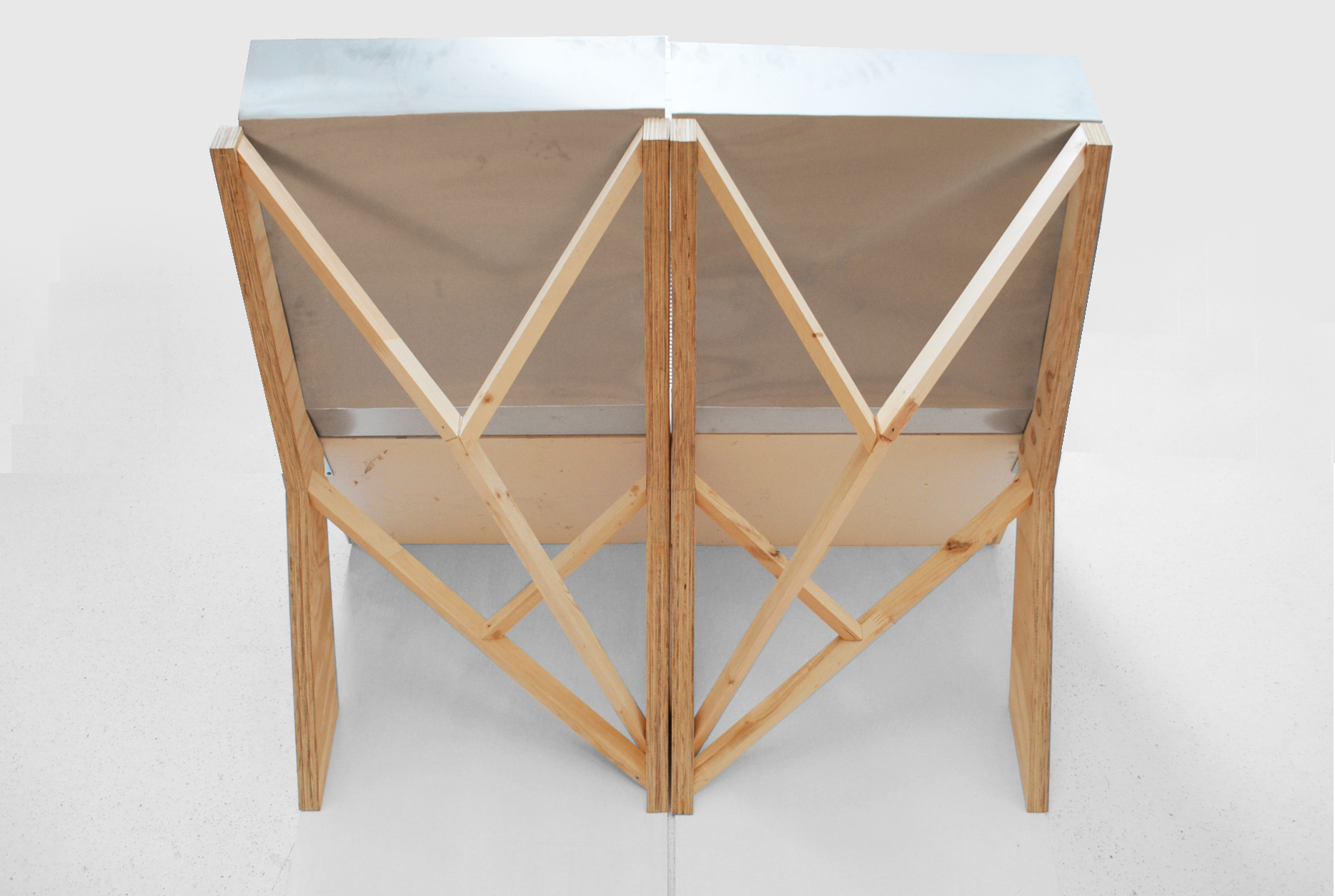
 Extended Eave Prototype for Goldfinches
Extended Eave Prototype for GoldfinchesSynanthropic Suburbia is a portion of Sarah Gunawan’s Master of Architecture Thesis completed at the University of Waterloo School of Architecture.
Advisors: Lola Sheppard & Matthew Spremulli
Committee: Robert Corry, University of Guelph
External Reader: Joyce Hwang, University at Buffalo
Advisors: Lola Sheppard & Matthew Spremulli
Committee: Robert Corry, University of Guelph
External Reader: Joyce Hwang, University at Buffalo